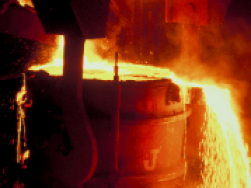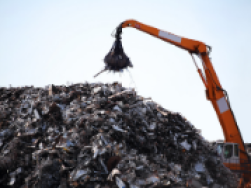State of Steel - September 2021
Pricing - Are we getting close to the top?
Steel price increases have continued to rise although we have not seen any additional mill increases since August 20th. Coil continues to be in high demand, but the tubing mills are beginning to see some relief with raw material. As of the second week of September, the steel pricing index known as the CRU has now increased for the 54th week in a row. The CRU index has seen a 92% increase in the steel index since the beginning of the year and a 269% increase since a year ago in September of 2020. This marks the 13th month in a row that the CRU index has increased. For all structural tubing, Nucor Tubular and Atlas Tube (the two largest structural tubing mills) raised prices on August 10th by another $125/ton on HSS, pipe, mechanical, and piling products but we have not seen anything since. With regards to DOM, we received a 10% increase effective 8/20/21 for a total of 15% just in the month of August. Most mill pricing has increased 13 times for a total of 89-92% overall since the beginning of October 2020. The below charts reflect a current listing of all price increases on tubing that we have seen since late August of 2020.
LME aluminum prices rose to their highest level since early 2011 after a military coup in mineral-rich Guinea took place over the weekend. Guinea is a major global supplier of bauxite and iron ore. The country exported 82.4 million tons of bauxite in 2020, making it the world’s largest exporter, according to metal’s brokerage Marex. (Source: Wall Street Journal).


Pricing on Dura-Bar continuous cast iron bar is mixed this month. The Gray iron surcharge actually went down slightly while all other grades continued to increase. Base prices increased in February of this year with additional significant base price increases implemented again on July 1st, 2021. July increases for common sizes of gray iron increased roughly ~12% and common sizes of ductile iron increased roughly ~8%. Harder to produce and specialty sizes increased significantly more than that. Effective August 1st, 2021, an additional 8% base price increase across the board was implemented on all grades and sizes. The below chart details the Dura-Bar surcharges over the last year or so.

Lead Times
Understanding lead times for steel products are important to every participant in the supply chain. Lead times for steel products are as follows (as of 9/10/21):
Average HRC lead times declined this week to 7.9 weeks versus an average of ~5.5 weeks since 2016. This was the shortest average lead time since October 2020. Other product lead times were lower to flat this week with CRC lead times at 9.3 weeks, HDG lead times at 10.5 weeks, and plate lead times at 9.1 weeks. (Source: Platts)
DOM Tubing continues to be long and is anywhere from 25-34 weeks given the availability of raw steel coils and orders already on the books. We are beginning to see "Allocations" in the marketplace which is not a good sign for availability.
Structural Tubing mill lead times are running approximately 8-14 weeks upon receipt of order.
Dura-Bar Continuous Cast Iron mill lead times are approximately 8-14 weeks depending on size, grade, and finish.
Metal Production
In the week ended September 4, US raw steel production decreased 0.4% week-over-week to 1.866mt (+23.5% YoY). US capacity utilization was 84.5% vs 67.4% last year. Year-to-date production is 63.904mt up 20.1% year-over-year from 53.230mt last year. (Source: AISI)
Scrap
Market sources currently expect domestic scrap prices in export-dependent regions of the US to face further downward pressure in October due to continued weakness in the export markets. This follows September’s settlement whereby shredded scrap prices declined $10-$25/ton month-over-month (depending on the region), and prime scrap prices declined $50/ton month-over-month, which was the first decline in prime grades in 13 months. (Source: AMM)
Imports
Final Census data showed that total foreign steel imports were 3.08 million tons in July, up 5% month-over-month. This was the highest level since January 2020. Total finished steel imports (excluding semi-finished) were finalized at 2.17 million tons in July, the highest level seen since January 2019. (Source: SMU). Major US ports were forecast to handle the equivalent of ~2.37 million imported containers in August, according to the Global Port Tracker report produced by Hackett Associates for the National Retail Federation. The figure is the most for any month on record dating back to 2002, and NRF projects overall inbound volumes for the year will reach 25.9 million containers, measured in 20-foot equivalent units. That would break the record of 22 million in 2020. This, coupled with labor shortages, is creating a major logjam at US ports, leading to extended lead times on imports. (Source: Wall Street Journal)






